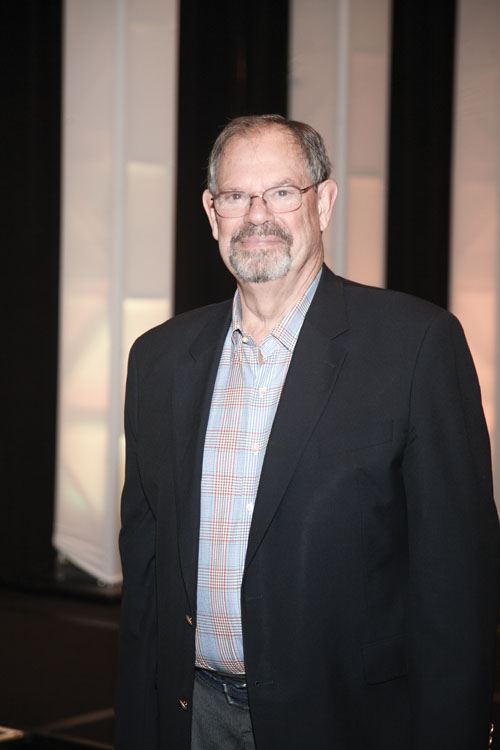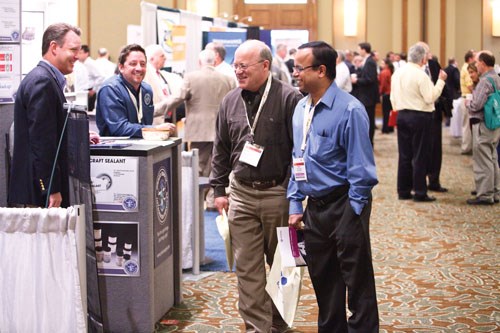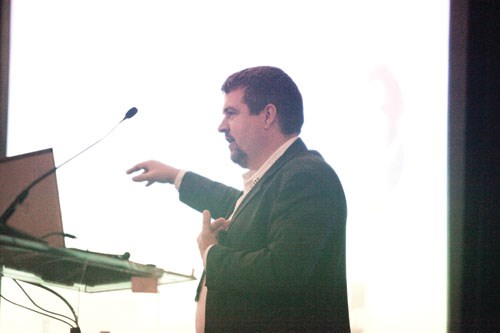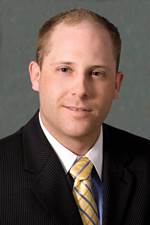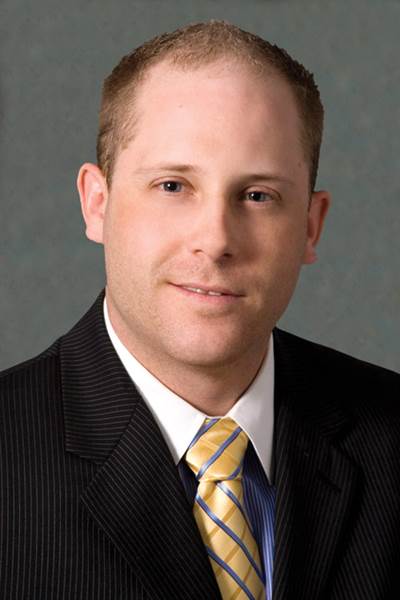SAMPE Tech 2011 in Texas
The Society’s annual fall gathering fills an exhibition hall this year nearly as big as the host state.
The Omni Hotel in Ft. Worth, Texas, was the setting for the Society for the Advancement of Material and Process Engineering’s 2011 Fall Technical Conference. Colocated with the Society of Manufacturing Engineers’ (SME) Manufacturing with Composites Conference and the American Society of Testing and Materials’ (ASTM) D30 Committee meetings. SAMPE Tech also coincided with CompositeWorld’s own 2011 Investment Forum (see our CIF coverage, under "Editor's Picks," at top right.). Under the thematic banner “Developing Scalable Materials and Processes for Our Future,” SAMPE attracted an array of knowledgeable professionals from industry and academia.
A highlight of the event, held Monday, Oct. 17 through Thursday, Oct. 20, was Tuesday morning’s keynote address by Phil Condit, former chairman and CEO of The Boeing Co. (Chicago, Ill.). Without a PowerPoint presentation or even a pointer, Condit boiled his topic, “Leading in Innovation and Business,” down to two memorable points: (1) listen aggressively and (2) keep in mind that none of us are as smart as all of us. He illuminated these key leadership imperatives with stories from his 38-year tenure at Boeing. He described, for example, his practice of walking the factory floor at unlikely times to watch and listen to technicians at work. He was stopped one evening on the 747 production line by a worker who complained that a certain part didn’t fit and often had to be rejected. After thinking about the complaint and conducting a study of part rejection rates and tool wear, Condit asked managers to convert all of Boeing’s paper and Mylar drawings and tool designs to an all-digital system for better part accuracy and fit, a decision that eventually, he says, “changed the world.”
Another story involved the team meetings that occurred during design of the 777 aircraft, a process that included, for the first time, input from airline customers. In one meeting, an airline customer reported that mechanics at Chicago’s O’Hare International Airport complained that engine cowl latches were too small on existing Boeing planes, making them difficult to open. The engineers at first countered with explanations of how easily the latches opened. Adopting the aggressive listening posture, the team delved deeper and realized that the mechanics were trying to open the cowls in subzero weather wearing heavy gloves. At Condit’s urging, the latch was redesigned. Another case involved airplane noise. An airline customer insisted that Boeing eliminate the “big bang” noises. Aggressive listening revealed that discreet noises, like the bang of a lavatory seat slamming down during turbulence and the hydraulic whine of the landing gear deploying, were very unnerving to passengers. That led to engineering that reduced such noises on the 777. One outcome was hydraulically damped toilet seats.
After his presentation, an audience member asked about the extensive use of composites on the 787 and the resulting schedule delays. Condit, whose tenure at Boeing ended before the 787 program began, nevertheless observed that the problem was not composites per se but probably the presence of too many “unknown unknowns.” That is, the 787 team changed so many systems and design approaches on the aircraft that, according to Condit, “it became an issue of not being able to attend to all the problems because you didn’t know what they all were yet.” A question about team communication prompted strong advice: “It’s incredibly easy to tell someone they’re stupid. The challenge is to listen and change your vocabulary so you can speak to and understand people who come from a different perspective. Recognize that all the people around you contribute to your ability to do amazing things,” he admonished.
Wednesday morning’s compelling keynote was delivered by Boeing Technical Fellow Dr. Johnny Golden. His topic was the tough environmental demands of space exploration and how composite materials used on the International Space Station (ISS) have held up over time to assault by thermal extremes and temperature cycles, ionizing radiation, atomic oxygen, plasma and collisions with micrometeorites and foreign object debris. It is well known that space is a tough environment for materials; Golden showed a series of before-and-after photos of various ISS elements and described lessons learned in selecting materials for long-term performance.
During the sessions some interesting research and opinions emerged. Chaired by Steve Nolet of TPI Composites Inc. (Scottsdale, Ariz.), the panel discussion on wind energy was an eye-opener, thanks to Nolet’s frank analysis of issues within the composites industry that could impact wind blade manufacturing. For example, he reported that annual composite material demands for wind turbines are already massive — more than 200 million lb/90,720 metric tonnes of glass and 40 million lb/18,140 metric tonnes of carbon fiber. If the U.S. and other countries that are committed to wind energy development continue to the point that wind provides 20 percent of their energy needs, Nolet believes the world could face severe shortages of both fiber and resin. He also challenged the industry to try to develop an automated approach for blade layup that is as efficient as his work crews, who he claims can lay up 60,000 lb/27,215 kg of composite materials in one mold half in just four hours.
Another well-attended panel addressed the use of additive manufacturing methods for aerospace parts. Scott Martin, Boeing’s senior manager for composite fabrication processes, revealed that direct digital manufacturing processes are being used to create parts for 10 program platforms. From his production perspective, he noted that larger build chambers are needed, and he posed the question: “Can we go outside of a build chamber” and develop some new processes that are robust and reliable? In other sessions, several papers were devoted to the topic of automated fiber placement using dry fibers, a new approach that has arisen as manufacturers look for ways to increase the productivity of infusion processes, without the cost of prepreg materials. Another topic with some traction was the use of thermoplastic materials in short-cycle processes for nonaerospace applications.
Exhibits galore
On the packed exhibit floor, the largest ever for a SAMPE Tech event, company representatives offered a wealth of products and innovations.
Woven glass fabrics for aircraft
AFG USA LLC (Alpharetta, Ga.), a first-time SAMPE Tech exhibitor, described its fiberglass fabrics for a variety of applications. Backed by a facility equipped with 900 looms, the weaver and distributor showed its 7781 glass fabric, a new product for aircraft interiors, and its thicker 7642 fabric, intended for structural panels or other industrial applications, such as piping.
Cutting and drilling tools
CONTROX-NEUHAUSER Precision Cutting Tools (Springfield, Ohio), also a first-time exhibitor, demonstrated its range of carbide, diamond and new laser-etched polycrystalline diamond (PCD) helix tools for cutting and machining. Representatives of the 100-plus-year-old company focused primarily on CORECUT, VALVE TYPE CUTTER and POCKET CUT tools geared to machining honeycomb core materials for aerospace and automotive sandwich-panel applications.
High-temperature airframe composites
Hampson Aerospace Aerostructures & Composites’ wholly owned subsidiary Composites Horizons LLC (CHI, Covina, Calif.) showcased its expertise in the production of high-temperature composites for commercial and military airframes, gas turbine engines and space structures, among other markets. Mark Kelly, CHI’s VP of sales and marketing, told HPC that the service temperature limitation of composites is the only barrier to its greater penetration into the jet engine market, which promises to be a huge potential growth area, in his company’s view. HPC also learned that CHI president and CEO Jeff Hynes was recently interviewed by CNBC TV news, regarding the state of the composites industry in relation to the rest of the U.S. economy (ahead of the curve and hiring) and CHI’s robust growth curve.
Rapid prototyping specialist
Harvest Technologies (Belton, Texas), a specialist in rapid prototyping, showed its capabilities in laser sintering, stereolithography, 3-D printing, rapid tooling and postprocessing, among others. The company produces prototypes and models, casting patterns and production parts, using a wide range of materials.
Epoxy resin production increase
Huntsman Advanced Materials (The Woodlands, Texas) highlighted its recent announcement that it will expand a key product line at its McIntosh, Ala., facility, boosting global production of epoxy. Based on the results of a multimillion dollar in-depth engineering study, the expansion of the company’s multifunctional epoxy resin capacity is expected to serve the current and future needs of its customers in the aerospace and composites industries. The Alabama expansion follows similar investments during 2011 to double epoxy capacity at the company’s Monthey, Switzerland, facility.
Fiber-optic sensor platform
Luna (Blacksburg, Va.) recently introduced its OdiSi (Optical Distributed Sensor Interrogator) platform, which provides strain or temperature measurements using in situ, embedded optical fiber as a continuous sensor. Working without traditional fiber Bragg gratings, Luna’s solution reportedly captures thousands of sensing points along the fiber-optic cable with a single instrument and gathers simultaneous strain and temperature measurements without fear of electromagnetic or radio-frequency interference, says the company. Applicable in markets such as aerospace, automotive and energy, the technology is easily deployed for model verification and design improvement during product development as well as for structural health monitoring of finished products in the field.
Recycled carbon fiber products
MIT-RCF LLC (Lake City, S.C.), a division of Materials Innovation Technologies (Fletcher, N.C.), reported that it is making huge strides in capturing and repurposing waste carbon fiber and claims that it is working toward a yearly capacity of 1 million lb (454 metric tonnes). The company now offers five standard products: (1) chopped carbon for compounders; (2) nonwoven mats of various densities in roll-goods form; (3) commingled carbon fiber/thermoplastic mats, also as roll goods; (4) slurry-molded preforms, using its patented 3-DEP process; and (5) slurry-molded preforms made with commingled carbon and thermoplastic fibers, the latter becoming the matrix material in the finished part. The company’s reclaimed carbon fiber materials will be available through distributor Composites One (Arlington Heights, Ill.) and are currently used by Trek Bicycles (Waterloo, Wis.) and other manufacturers, says the company. Customized materials and preforms are also available to meet specific application demands.
Tools for drilling/cutting
In its first appearance at a SAMPE Tech event, National Diamond Lab of Texas Inc. (Dallas, Texas) attracted interest with its range of diamond cutting tools, including electroplated diamond, vacuum-brazed diamond and polycrystalline diamond (PCD) developed for composites. Offering router bits, saw blades, hole saws and more, the company is focused on helping customers reduce their manufacturing costs. As part of that strategy, the company will replate and sharpen customers’ used tools.
HIgh-temperature sintering process
Paramount Industries Inc. (Langhorne, Pa.) was a participant in the SAMPE additive manufacturing panel, based on its work on the F-35 Lightning II aircraft. The company claims to have developed a “breakthrough disruptive manufacturing technology” with its High Temperature Sintering (HTS) system. Starting with 3-D CAD models that are nested and strategically oriented within the build chamber to achieve optimal part densification and repeatable dimensional accuracy, Paramount polymerizes its material with a CO2 laser to produce high-temperature parts. Materials include a sinterable nanocomposite and carbon fiber-reinforced polymers.
Composite struts for space systems
Park Electrochemical Corp. (Melville, N.Y.) exhibited its new and trademarked SIGMA STRUT composite strut structure, with a unique metal end fitting cocured into each end without adhesives. Weighing 70 percent less than metal struts and 40 percent less than other composite struts, SIGMA STRUTs can be used in tension or compression and can support loads up to 240,000 lb/109,090 kg over a range of temperature conditions, says the company. They have been employed on NASA’s Max Launch Abort System (MLAS) test vehicle. The struts will be produced at the company’s Newton, Kan., facility.
Curing ovens for composites
Precision Quincy (Woodstock, Ill.) showcased its line of curing ovens for composites. Designed to generate uniform temperatures throughout the curing cavity, each oven’s interior is constructed from heavy-gauge, temperature-resistant aluminized steel with a 2.5-inch/633-mm insulated floor. The standard features include adjustable louvered openings in supply and return ducts; heavy-duty blowers; vertical and horizontal airflow; and a prewired NEMA 1 control cabinet with UL-approved controls. Optional equipment includes thermocouple jack panels, cure-cycle ramp-soak programmers, digital cycle timers and more. All of the company’s curing ovens are in full compliance with NFPA-86, NFPA-70, OSHA and UL requirements. The company also revealed that a new software product is in development.
High-temp matrices for hot-zone apps
Pyromeral Systems Inc. (Dallas, Texas), a specialist in very high-temperature inorganic polymers and glass-ceramic matrices for applications up to 1800°F/982°C, described how its PyroSic matrix material reinforced with carbon fiber was selected by Lamborghini to produce tailpipes for the car company’s new and ultra-exotic Sesto Elemento supercar, first unveiled in 2010. The material processes like a normal thermoset, but it can perform well in demanding hot-zone applications. According to the company, its business is growing, particularly in the automotive and aerospace markets.
Engineered fabrics and prepregs
Saati Americas Corp. (Fountain Inn, S.C.) publicized its new North American presence at the show and introduced the advanced materials community to the company’s engineered fabrics and prepregs. A business unit of SAATI Group (Legnano, Italy), SAATI Americas’ 260,000-ft2 (24,155m2) U.S. production plant in South Carolina is now operational, offering the same products that are currently available in Europe. These include engineered woven biaxials and more, as well as hot-melt prepregs. A solution-coating prepreg line also is in development. The company is targeting automotive, medical and industrial markets.
Pourable/sprayable poly foams
Stepan Co. (Northfield, Ill.) showed exhibit hall visitors its competency in pourable and sprayable STEPANFOAM polyurethane and polyisocyanurate foams. On display were the company’s newer HTC-series high-temperature-capable polyurethane products, with service temperatures up to 430°F/221°C, for prototype tooling or splashes.
Large sprayable, reusable vacuum bags
Distributor Technology Marketing Inc. (TMI, Salt Lake City, Utah) showed a huge reusable vacuum bag (RVB) at its booth, made using Sprayomer elastomer technology from SR Composites LLC (Henderson, Nev.). The one-part, natural rubber bag material is available in three grades that differ in terms of part cure temperature and contain neither silicones nor volatile organic compounds (VOCs). The RVB can be built up in less than a day by spraying multiple thin layers and allowing each to de-gas. Channels and details can be easily incorporated into the bag during the build, says TMI, and the end result is a reportedly repairable, durable and green product that holds up to hundreds of part pulls.
All-black aramid fiber
The primary focus at the TEIJIN ARAMID USA (Conyers, Ga.) booth was the company’s new all-black Twaron aramid fiber. The production of aramid fiber in black, instead of its natural gold color, began in September 2011 at the request of customers in the sailing and sports industries, says the company. Because aramid is difficult to dye, the fiber production process has been adjusted to allow injection of black dye during fiber forming, while still producing filaments of the same strength and quality as undyed filaments. The new fiber is produced in the company’s Emmen, The Netherlands, plant.
Primers and filling compounds
3M Automotive & Aerospace Solutions Division (St. Paul, Minn.) showcased new products that included Scotch-Weld Structural Adhesive Primers EW-5000 and EW-5000 AS, which are water-based, structural bonding primers that contain low levels of volatile organic compounds (VOCs) but reportedly perform as well as traditional solvent-based options, particularly in the area of corrosion protection. Also on display were Scotch-Weld Low Density Void Filling Compounds. Lightweight, extrudable and pumpable, the compounds are intended as edge filling for aircraft interior part manufacturing. The low-density compounds are halogen- and antimony-free.
Ovens for composite aircraft parts
Wisconsin Oven Corp. (East Troy, Wis.) displayed its composites processing equipment, with offerings that include batch ovens, walk-in ovens, top-load ovens, vertical conveyor ovens and more, available as customized solutions for particular applications. A recent customer application was a gas-fired, walk-in batch oven to cure aircraft parts. With two independent chambers separated by a vertical-lift door, the oven can cure parts in either chamber, or the door can be lifted to create a 45-ft/13.7m chamber for very long parts. Made with 6-inch/152.4-mm thick tongue and groove panel assemblies and 20-gauge aluminized steel interiors, each chamber is heated by a 1.5 million BTU/hr air heat burner with an airflow system designed to maximize heating rates and maintain temperature uniformity.
Related Content
Bladder-assisted compression molding derivative produces complex, autoclave-quality automotive parts
HP Composites’ AirPower technology enables high-rate CFRP roof production with 50% energy savings for the Maserati MC20.
Read MoreFrom the CW Archives: Airbus A400M cargo door
The inaugural CW From the Archives revisits Sara Black’s 2007 story on out-of-autoclave infusion used to fabricate the massive composite upper cargo door for the Airbus A400M military airlifter.
Read MorePlant tour: Albany Engineered Composites, Rochester, N.H., U.S.
Efficient, high-quality, well-controlled composites manufacturing at volume is the mantra for this 3D weaving specialist.
Read MoreCompPair adds swift prepreg line to HealTech Standard product family
The HealTech Standard product family from CompPair has been expanded with the addition of CS02, a swift prepreg line.
Read MoreRead Next
CompositesWorld Investment Forum 2011 Highlights
When CIF conferees gathered, the subject was capital (its lack) and the prescription was scale up.
Read MorePlant tour: Daher Shap’in TechCenter and composites production plant, Saint-Aignan-de-Grandlieu, France
Co-located R&D and production advance OOA thermosets, thermoplastics, welding, recycling and digital technologies for faster processing and certification of lighter, more sustainable composites.
Read MoreAll-recycled, needle-punched nonwoven CFRP slashes carbon footprint of Formula 2 seat
Dallara and Tenowo collaborate to produce a race-ready Formula 2 seat using recycled carbon fiber, reducing CO2 emissions by 97.5% compared to virgin materials.
Read More

